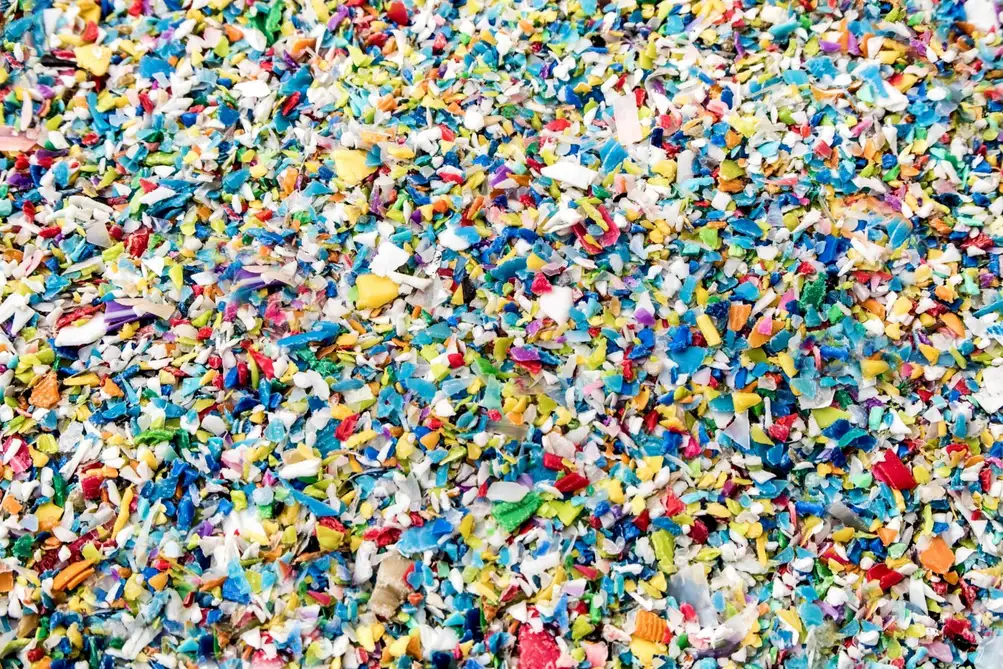
Take a look around at the things you use on a regular basis, whether at home,at school, or in the office, chances are that many of those products will have plastic in them. It is not just the products around us, plastics, in the form of pollution, are now found everywhere, on land, in rivers, seas and oceans, as well as in the air we breathe, the food we eat and the liquids we drink.
Our planet is choking on plastics; they have become not only an environmental challenge, but also pose a serious threat to our health and well-being. Plastics degrade over decades and centuries into smaller micro- and nano-plastics that could enter our bodies leading to several negative health impacts, including cancers, lung disease, and birth defects. In addition, toxic chemical additives in plastics can alter hormone activity, which could disrupt reproduction, growth, and cognitive function.
We urgently need a rethink on how we produce, use and dispose of plastics. Recycling has been the recommended route to reduce plastic production and disposal, but studies conducted over the years show that less than 10 percent of the more than 8 billion tons of plastic produced since the 1950s has been recycled so far. Most of the plastic recycling that occurs today is a type known as mechanical recycling.

Mechanical plastic recycling involves collecting, cleaning, sorting, shredding and then melting the plastics into pellets that are sold to producers of recycled plastic products. However, this recycling process is difficult due to the multiple polymers now used in many plastics, as they do not mix well when melted and can degrade the quality of recycled products. It is estimated that only less than 14 percent of all recycled plastics can be used to make new products.
A new chemical process, developed by researchers at the University of California in the United States, has been shown to effectively vaporize plastics that dominate the waste stream today and turn them into hydrocarbon building blocks for new plastics. The catalytic process works equally well with the two dominant types of post-consumer plastic waste: polyethylene, the component of most single-use plastic bags; and polypropylene, the stuff of hard plastics, from microwavable dishes to luggage. It also efficiently degrades a mix of these types of plastics.
Polyethylene and polypropylene plastics constitute about two-thirds of post-consumer plastic waste worldwide. About 80 percent ends up in landfills, is incinerated or simply tossed into the streets, often ending up as microplastics in streams and the ocean. The rest is recycled, or rather, down-cycled as low-value plastic, becoming decking materials, flowerpots and sporks.
To reduce this waste, researchers have been looking for ways to turn the plastics into something more valuable, such as the monomers that are polymerized to produce new plastics. Researchers behind the new chemical process say their method works by cleaving stable carbon-carbon bonds of polymers to create monomers, which allows the polyethylene and polypropylene to be recycled
The new process uses two cheaper, readily available catalysts to achieve the cleaving and conversion process. First, a sodium on alumina catalyst broke or cracked the polyethylene polymer chains, leaving one of the two pieces with a reactive carbon-carbon double bond at the end. A second tungsten oxide on silica catalyst then linked the carbon atom at the end of the chain to ethylene gas, which is constantly streamed through the reaction chamber, to form a propylene molecule. The second process leaves behind a double bond that the catalyst can access again and again until the entire chain has been converted to propylene.
A similar reaction occurs with polypropylene to form a combination of propene and a hydrocarbon called isobutylene, which is used in the chemical industry to make polymers for a range of higher value products, including cosmetics and high-octane gasoline additives. An analogy to the new chemical process would be to think of a string of beads with knots at the end to prevent them falling out. The new process repeatedly clips the string between the beads allowing individual beads to fall out.
The process, if scaled up, would create a circular polymer economy for plastics by converting plastic waste back into the monomers used to make more useful polymer plastics. While this reduces the need to make new plastics from petroleum, which contributes to greenhouse gases, the recycling of plastics to make more plastics is not a sustainable or permanent solution to our growing plastic pollution.
Our humongous use of plastic makes the recycling processes largely an exercise in futility. Today,around the world, one million plastic bottles are purchased every minute, and up to five trillion plastic bags are used worldwide every year. In total, half of all plastic produced is designed for single-use purposes—used just once and then thrown away, resulting in over 400 million tons of plastic waste every year.
With plastic use projected to increase threefold to over 1,100 million tons by 2050, strategies to recycle plastics will increasingly become difficult and unsustainable. The only viable option for a sustainable planet is to reduce using plastics. Period.












